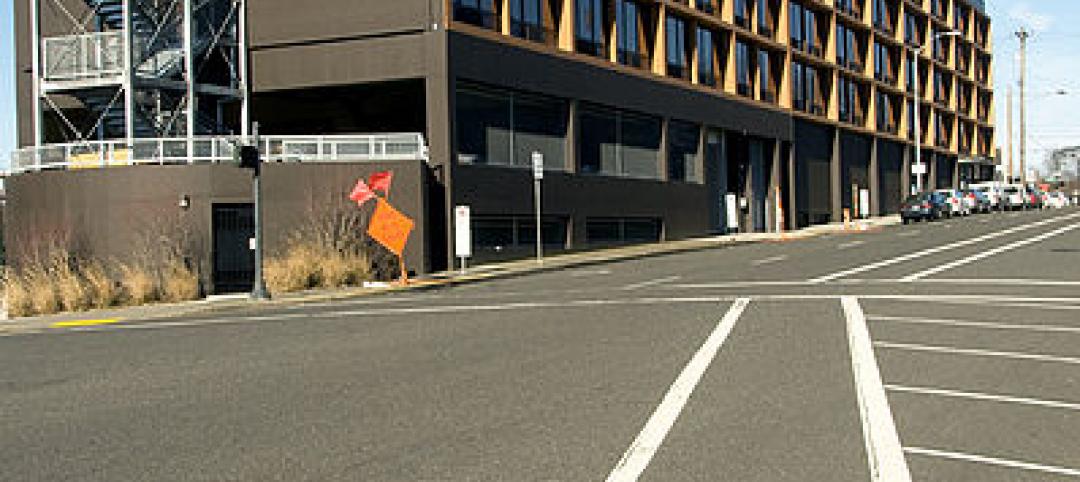Setting the Scene for Innovative Eco Solutions
Located on the scenic west coast of Canada, the British Columbia Institute of Technology (BCIT) is a public polytechnic institution of higher education. Its five campuses sprawl across the Metro Vancouver region with the main campus located in Burnaby, British Columbia.
A forward thinking institution that believes in a hands-on approach to learning, BCIT wanted to develop a renewable energy system that would have a real impact on clean transportation and incorporate innovative solar components.
The Roots of Success
It all began in early 2007, when BC Hydro, a Canadian electric utility, and SMART, a BCIT Applied Research Group, embarked on a joint research initiative to design and develop Canada's first Smart Power Microgrid at BCIT's Burnaby campus. The goal was to build a smarter, more secure power grid that would balance power generation to demand, reduce the potential for blackouts, and integrate current energy sources.
Titled the Smart Microgrid Program, the ongoing initiative includes BCIT’s Energy OASIS (Open Access to Sustainable Intermittent Sources) project involving a network of fast and standard charging stations that allow electric cars to be charged in minutes – facilitating the transition to green transportation in Canada.
Making it Happen
To make the Energy Oasis a reality, Panasonic Eco Solutions Canada was chosen to design and construct the integrated system of parking canopy structures, canopy mounted solar panels, and energy storage system.
Panasonic got to work engineering, procuring, and constructing the two parking canopies with 250 kW of solar PV – enough to power the EV charging stations. The team also designed and installed a 500 kWh energy storage and energy management system utilizing Panasonic lithium-ion batteries and a bidirectional inverter. The Panasonic Battery Energy Storage System (BESS) communicates with a Distributed Energy Management System, which learns when to buy, sell or store energy using intelligent algorithms and sends the requests to store or discharge the BESS at key times, such as peak usage or in low utility rate hours.
Collaborating with BCIT and other industry partners, Panasonic integrated the solar and battery systems into BCIT’s microgrid for a comprehensive, innovative structure.
Lasting Achievement
Recognized with a Canadian Solar Industries Association (CanSIA) Game Changer Award, the project was the first of its kind in Canada to successfully demonstrate the integration of solar power, energy storage, and electric vehicle charging stations in a grid-tied or ‘islanded’ configuration. With the team’s commissioning and post implementation support services, BCIT can count on reliable startup and continuous operation for years to come.
To learn more about Panasonic Eco Solutions and our work in North America, please visit www.panasonic.com/energysolutions.
Related Stories
| Nov 18, 2014
New tool helps developers, contractors identify geographic risk for construction
The new interactive tool from Aon Risk Solutions provides real-time updates pertaining to the risk climate of municipalities across the U.S.
| Nov 3, 2014
IIT names winners of inaugural Mies Crown Hall Americas Prize
Herzog & de Meuron's iconic 1111 Lincoln Road parking garage in Miami Beach, Fla., is one of two winners of the $50,000 architectural prize.
| Oct 29, 2014
Better guidance for appraising green buildings is steadily emerging
The Appraisal Foundation is striving to improve appraisers’ understanding of green valuation.
| Oct 16, 2014
Henning Larsen Architects to design train station for planned Danish town
Danish firm Henning Larsen Architects won Frederikssung municipality’s architecture competition for a regional train station in the planned city of Vinge—Denmark’s largest urban development.
| Oct 16, 2014
Perkins+Will white paper examines alternatives to flame retardant building materials
The white paper includes a list of 193 flame retardants, including 29 discovered in building and household products, 50 found in the indoor environment, and 33 in human blood, milk, and tissues.
| Oct 12, 2014
AIA 2030 commitment: Five years on, are we any closer to net-zero?
This year marks the fifth anniversary of the American Institute of Architects’ effort to have architecture firms voluntarily pledge net-zero energy design for all their buildings by 2030.
| Oct 3, 2014
New survey tracks Americans’ attitudes towards transit use
A record 10.7 billion rides were taken on public transit in the United States last year. And a national survey of Americans finds that the speed, reliability, and cost, more than any other factors, determine people’s willingness and frequency of use.
| Sep 24, 2014
Architecture billings see continued strength, led by institutional sector
On the heels of recording its strongest pace of growth since 2007, there continues to be an increasing level of demand for design services signaled in the latest Architecture Billings Index.
| Sep 24, 2014
Federal Highway Administration to release design manual for protected bike lanes
The guidelines will cover the pros and cons of different intersection designs and types of protection.
| Sep 22, 2014
4 keys to effective post-occupancy evaluations
Perkins+Will's Janice Barnes covers the four steps that designers should take to create POEs that provide design direction and measure design effectiveness.















